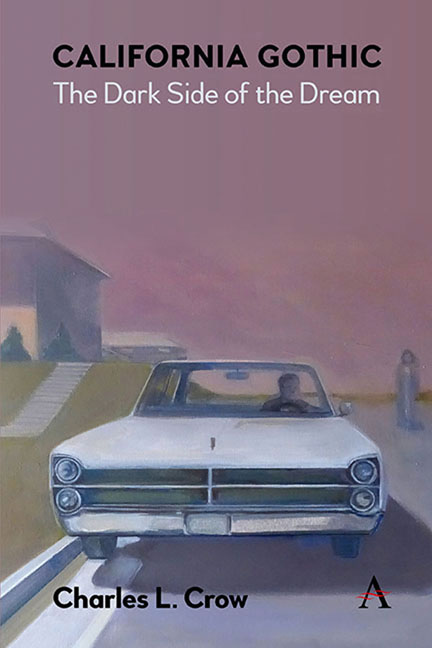Book contents
- Frontmatter
- Dedication
- Contents
- List of Figures
- Preface
- Acknowledgements
- 1 The Magic Island
- 2 Ambrose Bierce and San Francisco’s Gothic Frontier
- 3 Lost Coasts
- 4 Disease, Pandemics, and the Monstrous
- 5 The Shadow Line: Noir and California Gothic
- 6 California Ecogothic: What’s Buried in the Basement
- Works Cited
- Afterword
- Index
2 - Ambrose Bierce and San Francisco’s Gothic Frontier
Published online by Cambridge University Press: 27 March 2024
- Frontmatter
- Dedication
- Contents
- List of Figures
- Preface
- Acknowledgements
- 1 The Magic Island
- 2 Ambrose Bierce and San Francisco’s Gothic Frontier
- 3 Lost Coasts
- 4 Disease, Pandemics, and the Monstrous
- 5 The Shadow Line: Noir and California Gothic
- 6 California Ecogothic: What’s Buried in the Basement
- Works Cited
- Afterword
- Index
Summary
Ghost: The outward and visible sign of an inward fear.
—Ambrose Bierce, The Devil’s DictionaryWhat city has more or stranger disappearances and assassinations? There have been murders and suicides at all the hotels. Other cities surpass it in age, but none in crime and mystery.
—Emma F. Dawson, “A Sworn Statement”In 1845, the village of Yerba Buena had a population of about 300 souls. By 1850, the rechristened San Francisco was the biggest city on the west coast of the United States. San Francisco became rich first from the Gold Rush and then from the Comstock Lode of silver in Nevada. By the 1860s, its wealth as a banking and shipping center brought sophistication in the form of grand buildings, opera, and theater. The city had passed from Cole’s “The Savage State” to “The Consummation of Empire” in a single generation.
This growth had come at a cost. The Sierra foothills had been stripped of soil by hydraulic mining, which had flooded the Sacramento Delta and the Bay with silt. The native population of the Central Valley and the Sierra had been largely destroyed. Racial tensions were growing between white settlers and Chinese immigrants. In 1868, a major earthquake destroyed much of the city, underscoring the fragility of the City by the Bay. Such racial and environmental dissonance, suppressed in the narrative of progress, would return in California Gothic.
By the 1860s, San Francisco’s young “Bohemians,” a group of writers including Bret Harte, Ina Coolbrith, Warren Stoddard, and for a time Mark Twain, had begun what Franklin Walker dubbed (in a 1939 book by that title) “San Francisco’s Literary Frontier.” The Bohemians, writes Ben Tarnoff, “would bring a fresh spirit to American writing, drawn from the new world being formed in the Far West” (p. 5). Chief among the Bohemians was Bret Harte, who edited The Golden Era and then The Overland Monthly, a serious publication intended to rival The Atlantic, as for a time it did. Yet Harte was not a simple booster of California and the West. He knew its dark side. As a young journalist, he had been driven out of the town of Eureka when he reported honestly on the massacre of a nearby California Indian encampment. His tales of the gold fields were not just humorous or picturesque. Some of them, if not Gothic, could be considered at least “Gothic adjacent.”
- Type
- Chapter
- Information
- California GothicThe Dark Side of the Dream, pp. 11 - 18Publisher: Anthem PressPrint publication year: 2024

